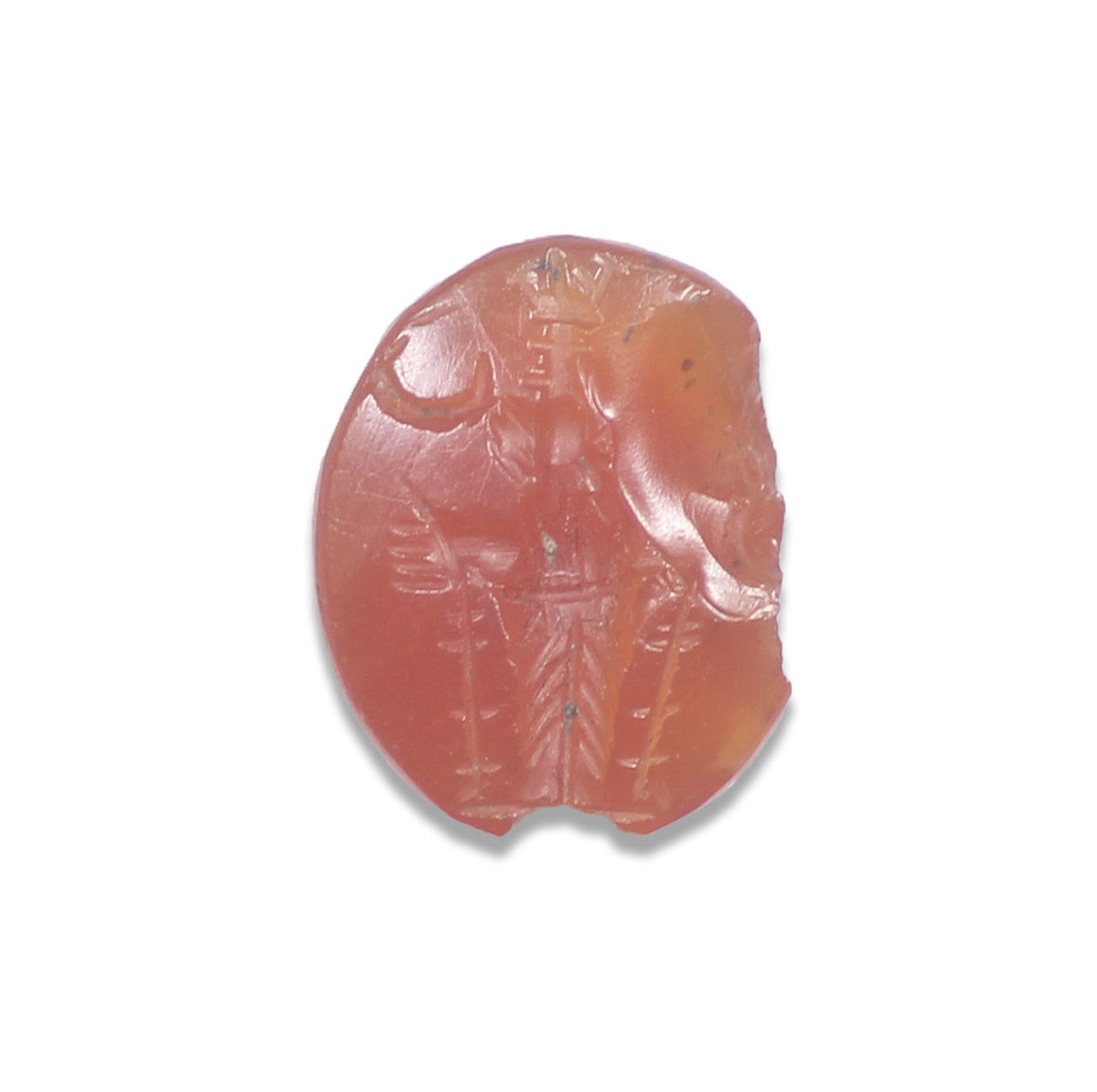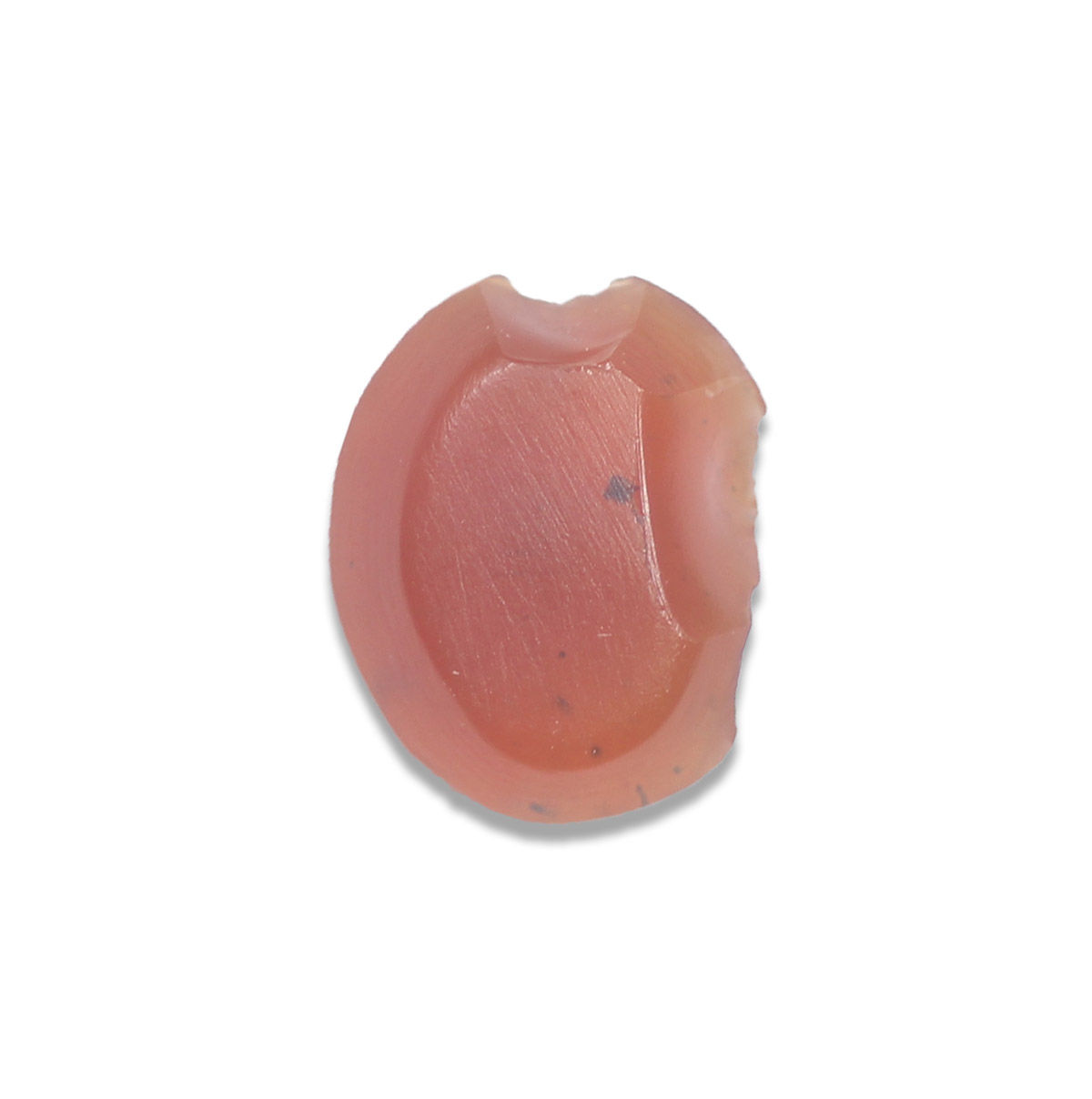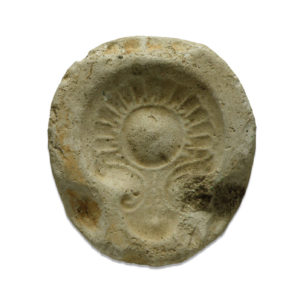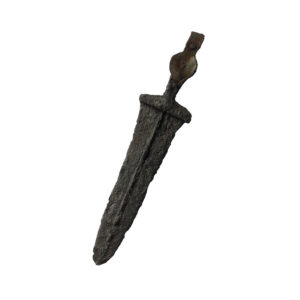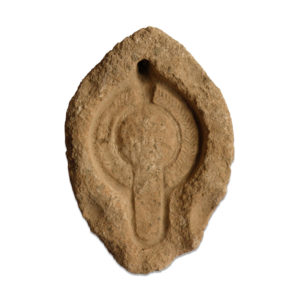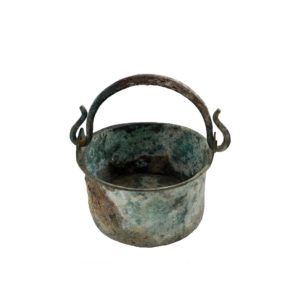Description
| ITEM | Intaglio stone depicting Diana of Ephesus |
| MATERIAL | Gemstone, Carnelian |
| CULTURE | Roman |
| PERIOD | 2nd – 3rd Century A.D |
| DIMENSIONS | 10 mm x 8 mm |
| CONDITION | Good condition |
| PROVENANCE | Ex Austrian private collection, M.S. Collection, acquired before 1970 |
Diana (among the Romans) or Artemis (among the Greeks) was the Goddess of the Moon and of the hunt. She was the virgin protectress of woodlands and wild animals, and is often depicted with a bow and arrows, which were used to punish mortals who angered her. She was the twin sister of Apollo, and the daughter of Jupiter (Zeus) and Latona (Leto).
The Ephesian Artemis, the “great mother goddess” also mentioned in the New Testament (Acts 19), was extremely popular in the ancient world, as we might deduce from the fact that copies of her cult statue have been excavated in many parts of the Roman Empire.
The goddess was originally, before her cult was taken over by the Greeks, called “Artimus”, and her temple – one of the Seven Wonders of the Ancient World – received gifts from the Lydian king Croesus (c.560-c.547). She is related to other Anatolian mother goddesses, like Cybele. The Ephesians believed that Artemis was born in Ephesus (and not on Delos, as was commonly assumed), and accepted the shrine as an asylum.note. Later, the Persians patronized the cult; the high priest was called the “Megabyxus”, a Persian name that means “the one set free for the cult of the divinity”.
One of Artemis’ characteristics is that she protects fertility. This may be symbolized by the spherical objects that cover the lower part of her chest, but the common assumption that they are female breasts is incorrect. They probably represent the testicles of a bull, although they may also be gourds, which were known in Asia as fertility symbols for centuries. Artemis’ robe is always decorated with lions, leopards, goats, griffins, and bulls, which represent Artemis’ title of Lady of the Animals.


